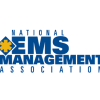The challenges to our industry are well known: a lack of adequate and sustainable funding; a reimbursement system that promotes transport over health and efficiency; a shortage of prepared and capable leadership at the local level; a need to replace the industry’s largest subsidy (volunteers); the absence of a unified industry story or message; and an ongoing lack of recognition of EMS as a unique, distinct and vital part of community and national infrastructure. So why is the National EMS Assessment so unenlightening?
I am not offering a criticism of the Assessment itself or the project team. Their mission was to describe EMS, EMS preparedness and 911 systems at state and national levels using existing data sources. They fulfilled that mission, and we now have a federally published document filled with quotable statistics. However, the Assessment signals the need for more qualitative approaches and methodologies that tell the complete story of EMS—where it is today and where it needs to go tomorrow.
Forty-five years ago, the first national assessment of EMS, commonly known as “The White Paper,” reported, “A review of ambulance services in the United States indicates a paucity of information and a limited framework for the collection of data on and the evaluation of current ambulance services.” Since that time, industry leadership has been in hot pursuit of the quantitative data that will present EMS as a scientifically legitimate undertaking so that it can join the ranks of real medicine and health care and finally get the respect, attention, funding and people it needs. Behind that pursuit is a powerful belief that empirical science, scientific methodology and objective measurement constitute the most authoritative explanation of EMS.
But a quick scan of the 500-plus pages of numbers, graphs, maps and surprisingly little narrative suggests that little has changed in 45 years. We are still in pursuit of elusive quantitative data about EMS, and the things we are able to count and measure fall far short of telling the EMS story. We keep doing the same thing and getting the same results.
The major challenges facing EMS today defy quantitative assessment methodology. For example, attitudes about financing, the fierce pride and independence of many local agencies, the lack of industry leadership, the dramatic changes in volunteerism and the lack of a unified national story are all difficult to describe with numbers and graphs. Yet these phenomena are not only real, they are what really matters and are worthy of study and address.
Because these phenomena fall into areas of sociology, human behavior and politics, they invite the methodologies used by these fields—qualitative methodologies, which use observation, interview, survey, dialogue and story. But here is the problem: Industry leadership has been heavily influenced and even dominated by physicians and medical science. The methodologies of physicians and medical science are great at studying cardiac arrest survival but poor at studying why a local ambulance service struggles to find staff or does not care about the state trauma program.
The National EMS Assessment signals the need for a new direction. First, it is time to stop hiding behind the decades-old excuse that a paucity of quantitative data inhibits our ability to tackle real issues. Second, EMS needs leadership that is not shackled by scientism. Finally, let’s encourage the feds to fund a new Agenda for the Future, one that represents current challenges. A new Agenda should build off the Assessment and be led by an investigator and an organization that is open to qualitative methodologies.
John Becknell is the founding publisher of Best Practices and a consultant who helps individuals and organizations clarify destinations and tell stories. He can be reached at jmbecknell@gmail.com.












